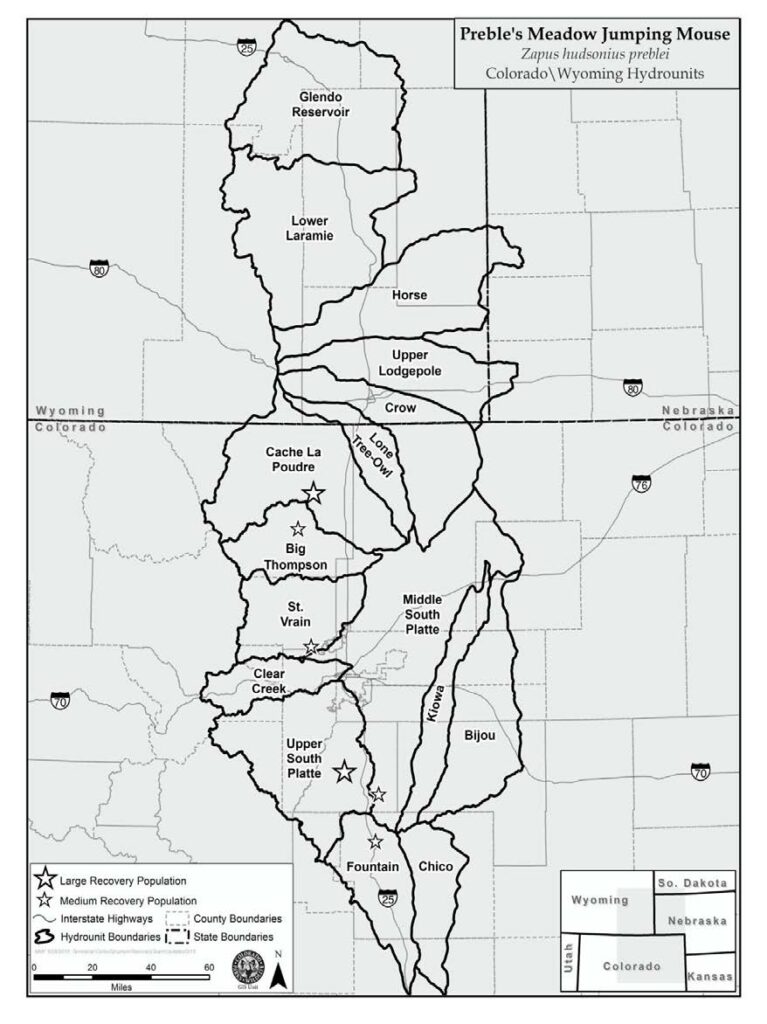The Preble’s meadow jumping mouse (Zapus hudsonius preblei) was listed by the U.S. Fish and Wildlife Service as federally threatened in 1998. This species is dependent on riparian ecosystems and is only found along the Front Range of Colorado and Southern Wyoming in riparian areas below 7600 feet.
The greatest threats to population recovery are habitat alteration, fragmentation, and destruction from urban development and grazing activities. Fortunately, suitable habitat for the Preble’s mouse can be maintained or improved in our watersheds with compatible land management.
The Preble’s mouse Recovery Plan, published in 2018, calls for the formation of Site Conservation Teams (SCTs), which shall nominate recovery populations, identify threats and means through which to manage threats, and reach out to communities with this information. Site Conservation Teams are composed of community stakeholders such as federal, state, and local government agencies, nonprofit entities, and private landowners.

Site Conservation Teams are tasked with assessing habitat quality within Hydrologic Unity Codes (HUCs, see map) in Colorado and Wyoming that host large (2,500 mice within a network of 57 miles of connected streams), medium (500 mice within 11 miles of connected streams) and small (occupied within 3 miles of connected streams) populations.
Mice populations are then nominated to serve as recovery populations whose size will be monitored for 10 years. They next develop Threat Abatement and Conservation plans, which serve to identify local and regional impacts and activities, potential management actions, and identification of opportunities for habitat improvement, including funding and support resources.
Plum Creek (coming soon)
Buckhorn (coming soon)
Cherry Creek (coming soon)
The Preble’s mouse will be considered recovered and eligible for delisting when:
USFWS National Preble’s Meadow Jumping Mouse
Preble’s Meadow Jumping Mouse Recovery Plan
Frequently-asked Questions
To see PMJM in action, check out this video.

Check back for future events in 2024!
363 Michael Smith Building
Warner College of Natural Resources
1401 Campus Delivery,
Colorado State University
Fort Collins, CO 80523
SEE MAP

Apply to CSU | Contact CSU | Disclaimer | Equal Opportunity | Privacy Statement
© 2021 Colorado State University